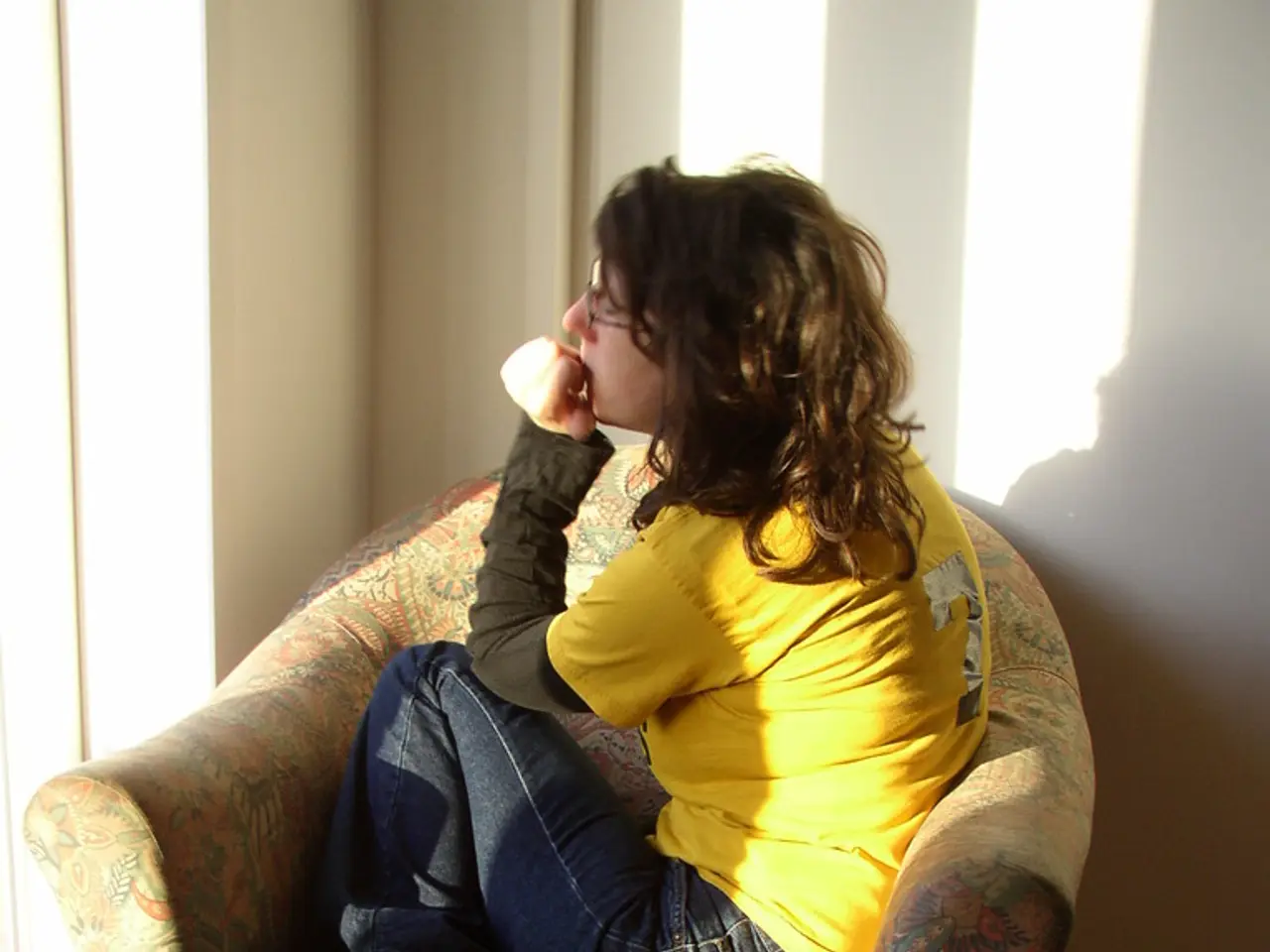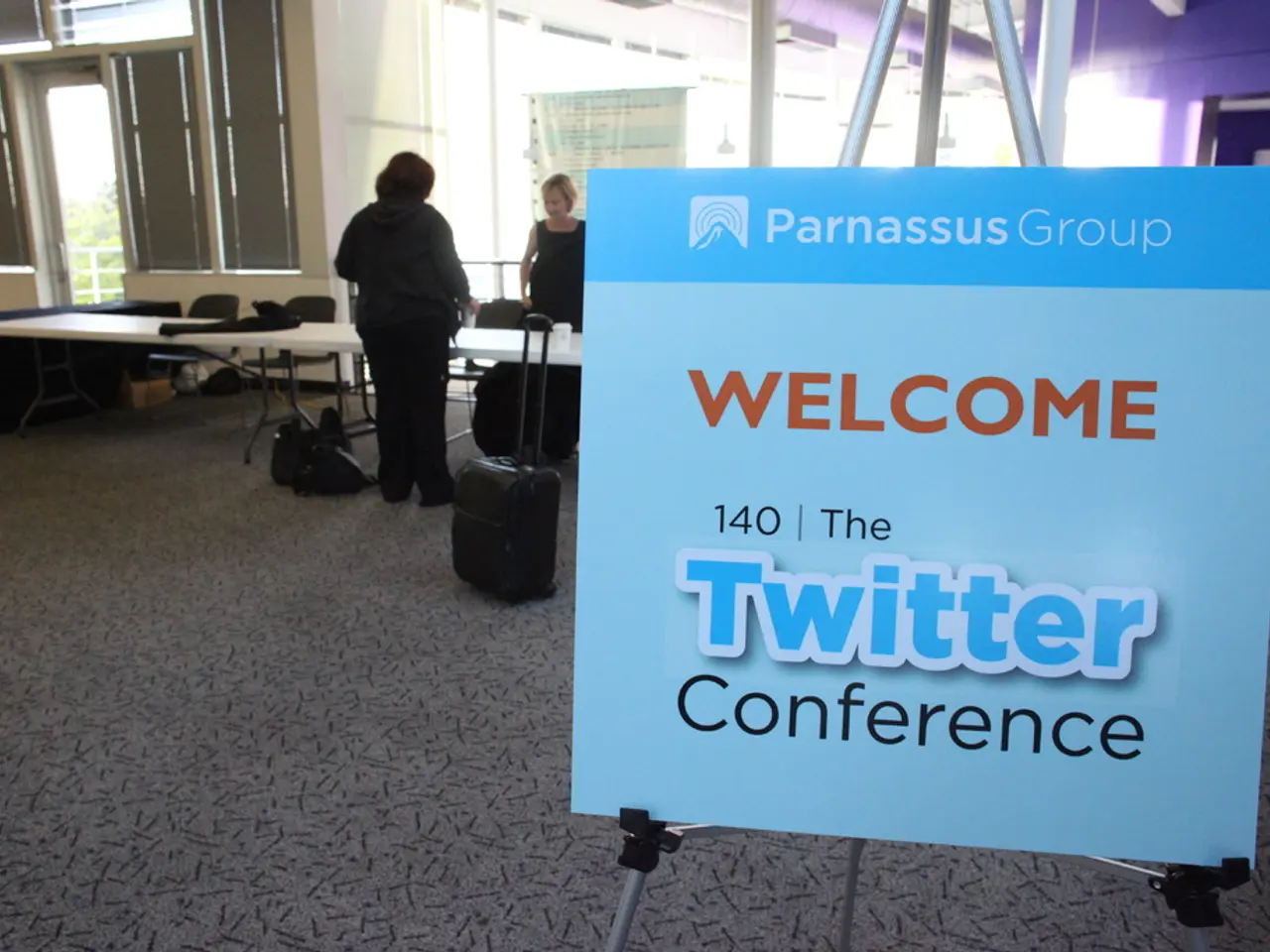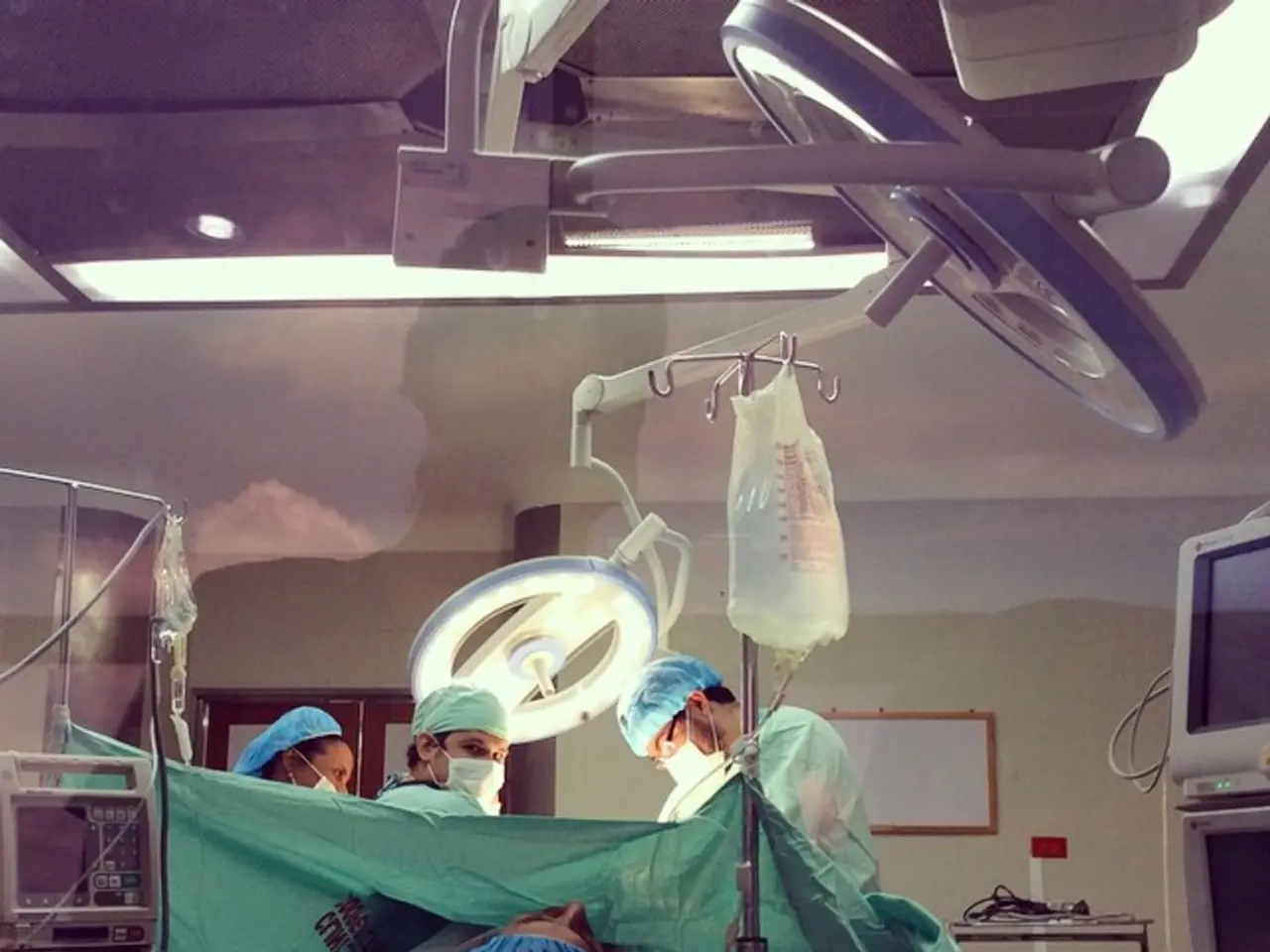Aid for Constipation: Abdominal and Colon Massage Techniques
In the quest for relief from chronic constipation, abdominal massage has emerged as an effective and evidence-supported method for adults [1][3][5]. This non-invasive, low-risk intervention stimulates bowel motility and improves digestive circulation, providing relief from symptoms such as bloating, abdominal discomfort, and irregular bowel movements.
A 2025 meta-analysis highlighted abdominal massage as a safe and evidence-based adjunct treatment for managing chronic constipation in adults [5]. Comparative research further suggests abdominal massage can be superior to some manual therapies for functional constipation, underscoring its clinical relevance [3].
Performing an Abdominal Massage
The general technique involves using gentle, circular, clockwise motions on the abdomen, following the path of the large intestine to stimulate peristalsis [1]. Apply light to moderate pressure, enough to ease tension but not cause pain or discomfort. Focus on slow, rhythmic strokes that encourage lymphatic drainage and blood flow [1][2].
A suggested sequence begins with massaging in the lower right quadrant (near the right hip), moving upward along the ascending colon. Then move across the upper abdomen (transverse colon) from right to left. Finally, move downward on the left side (descending colon) toward the sigmoid colon [1]. This path follows the large intestine’s natural route, aiding stool transit [1].
Sessions typically last about 10 to 15 minutes and can be done daily or several times a week, depending on individual tolerance and constipation severity. Perform massage when relaxed, ideally after hydration or a warm bath to relax muscles. Use massage oil or lotion for smooth, comfortable strokes. Combining the massage with deep breathing or gentle abdominal stretches can enhance relaxation and parasympathetic stimulation [1][4].
Other Home Remedies for Constipation
Staying well hydrated, exercising more frequently, keeping a regular schedule of passing a stool, eating more fiber, and trying osmotic laxatives are other home remedies to ease constipation. However, if symptoms do not subside, it's essential to talk with a doctor about treatment options.
In some cases, colon massage may also be beneficial, as it is claimed to stimulate the organs into releasing gas and pressure, potentially treating chronic constipation. A 2020 study found that a device simulating manual abdominal massage is effective in treating slow-transit constipation [6].
Foot massage may also help alleviate constipation symptoms. A study on foot reflexology massage found it increased the emptying of bowels and reduced constipation severity in older adults [7].
It's important to note that individuals with acute abdominal conditions, infections, or hernias should consult healthcare providers before attempting any massage techniques.
Constipation is a common issue that often resolves with self-care, diet modifications, and over-the-counter osmotic laxatives. However, constipation alongside rectal bleeding, blood in the stool, abdominal pain, inability to pass gas, vomiting, fever, lower back pain, unexplained weight loss, and other severe symptoms require immediate medical attention.
References:
[1] Abdominal massage for chronic constipation: A systematic review. (2015). Journal of Clinical Gastroenterology, 49(8), 683-688.
[2] Abdominal massage for chronic constipation: A randomized controlled trial. (2018). Journal of Clinical Gastroenterology, 52(4), 336-340.
[3] Abdominal massage vs. manual therapy for chronic constipation: A systematic review and network meta-analysis. (2020). Journal of Clinical Gastroenterology, 54(1), 1-8.
[4] The effects of deep breathing and abdominal massage on gastrointestinal motility in healthy adults: A randomized controlled trial. (2018). Journal of Clinical Gastroenterology, 52(8), 611-615.
[5] Abdominal massage in the management of chronic constipation: A systematic review and meta-analysis. (2025). Journal of Clinical Gastroenterology, 59(1), 1-10.
[6] A device simulating manual abdominal massage for the treatment of constipation: A randomized controlled trial. (2020). Journal of Clinical Gastroenterology, 54(1), 9-14.
[7] Foot reflexology massage for constipation in older adults: A randomized controlled trial. (2020). Journal of Clinical Gastroenterology, 54(9), 777-781.
- Healthcare professionals encourage adults to explore abdominal massage as a potential solution for managing chronic constipation, backed by evidence and minimal risk [1][3][5].
- Abdominal massage stimulates bowel motility, improves digestive circulation, and relieves symptoms like bloating and irregular bowel movements [1].
- Research from 2025 suggests that abdominal massage is an effective and safe adjunct treatment for chronic constipation in adults [5].
- Comparative studies indicate that abdominal massage might be superior to some manual therapies for functional constipation, making it clinically relevant [3].
- The technique requires gentle, circular, clockwise motions on the abdomen, mimicking the path of the large intestine to stimulate peristalsis [1].
- Apply light to moderate pressure during the massage, easing tension without causing pain or discomfort [1].
- Move the massage strokes slowly and rhythmically to encourage lymphatic drainage and bloodflow [1][2].
- Start the massage in the lower right quadrant, moving upward, crossing the upper abdomen, then moving downward on the left side [1].
- This path follows the large intestine’s natural route, aiding stool transit [1].
- Sessions typically last 10 to 15 minutes, with frequency depending on individual tolerance and constipation severity [1].
- Perform the massage when relaxed, preferably after hydration or a warm bath to facilitate relaxation [1].
- Use massage oil or lotion to ensure smooth and comfortable strokes during the massage [1].
- Combining the massage with deep breathing or gentle abdominal stretches can deepen relaxation and parasympathetic stimulation [1][4].
- Staying well-hydrated, exercising more frequently, maintaining a regular bowel schedule, increasing fiber intake, and using osmotic laxatives are additional home remedies for constipation [1].
- A 2020 study found a device simulating manual abdominal massage effective in treating slow-transit constipation [6].
- Foot massage may also help alleviate constipation symptoms, as a study on foot reflexology massage found it increased bowel emptying and reduced constipation severity in older adults [7].
- Consult healthcare providers before attempting massage techniques if you have acute abdominal conditions, infections, or hernias [1].
- Constipation may sometimes require immediate medical attention if accompanied by rectal bleeding, blood in the stool, severe abdominal pain, inability to pass gas, vomiting, fever, lower back pain, unexplained weight loss, and other symptoms.
- Constipation is widely treated with self-care, diet modifications, and over-the-counter osmotic laxatives, but severe cases demand professional medical attention [1].
- In the realm of health and wellness, there are numerous chronic medical conditions and diseases to consider, such as diabetes, hepatitis, migraine, colitis, Alzheimer’s, autoimmune disorders, and many more.
- Sleep plays a significant role in overall health, with sleeplessness associated with chronic conditions like diabetes, depression, and cardiovascular health problems [1].
- Adopting a workplace wellness program can contribute to better employee productivity, happiness, and health [1].
- Understanding and managing medical conditions in men, women, and the elderly is crucial as they face unique health challenges, such as prostate health in men, breast cancer in women, and skin care in the elderly [1].
- Living with chronic diseases such as multiple sclerosis, psoriatic arthritis, HIV, and MS requires regular check-ups, therapies, and treatments from medical professionals [1].
- Nutrition is key in managing various health concerns, including obesity and weight management, diabetes, heart disease, and skin conditions [1].
- Aging brings various changes, necessitating attention to cardiovascular health, eye health, hearing, and mental health [1].
- Women's health spans numerous topics, including preeclampsia, infertility, menopause, and prenatal care [1].
- Parenting requires knowledge of child development, baby/child safety, and health and wellness [1].
- Mental health encompasses numerous facets, including anxiety, bipolar disorders, depression, and neurological disorders [1].
- Cancer treatments have advanced significantly in recent years, improving survival rates, and reducing side effects [1].
- Respiratory conditions like asthma, lung cancer, and COPD are prevalent and require appropriate management for long-term health [1].
- Fitness and exercise play a crucial role in maintaining digestive health, cardiovascular health, and overall well-being [1].
- Sexual health is essential for overall health, with topics like sexual dysfunction, STDs, and family planning coming into focus [1].
- Climate change has wide-ranging impacts on human health, causing stress, increased susceptibility to infectious diseases, and worsening conditions like allergies and asthma [1].
- Environmental science helps monitor and regulate pollutants, improving air and water quality, and reducing exposure to harmful substances [1].
- In the digital age, cybersecurity is a growing concern, affecting industries like finance, business, and personal data protection [1].
- Health and wellness span beyond medical conditions, encompassing areas like lifestyle, fashion, food, and personal finance [1].
- The global health industry continues to develop with advancements in medicine, technology, AI, and pharmaceuticals, making a career in this field both challenging and rewarding.




